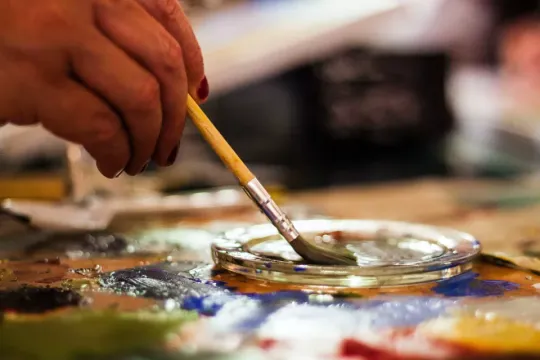Contemporary Spanish sculptors: a dynamic and varied art scene

Spain is known for its rich artistic history, especially in painting and architecture. However, the scene of contemporary Spanish sculpture is just as dynamic and varied as that of painting. Below are the most important and influential contemporary Spanish sculptors of our time.
Miguel Berrocal: exploring mathematical beauty
Miguel Berrocal is one of the most renowned contemporary Spanish sculptors of the 20th century. Born in Villanueva de Algaidas in 1933, he studied mathematics and physics before turning to art. This training marked his artistic work, which focuses on mathematical and geometric beauty.
Berrocal is perhaps best known for his "puzzle-sculptures", works of art that can be taken apart and reassembled in different ways to create new shapes. These works were produced on a large scale and were sold to collectors around the world.
Eduardo Chillida: movement and harmony
Eduardo Chillida is another important contemporary Spanish sculptor, born in San Sebastian in 1924. His work is characterized by the use of raw materials such as iron, bronze, granite and wood.
Chillida was interested in how shapes could be used to create movement and harmony. His sculptures often have an abstract appearance, but they are actually linked to nature and the world around us.
One of his most famous works is "Peine del Viento", which is on Ondarreta beach in San Sebastian. This stainless steel sculpture is made up of three structures, each weighing over 20 tons.
Jaume Plensa: the alliance between art and technology
Jaume Plensa is a Catalan sculptor who worked with a wide variety of materials including bronze, glass and marble. He is famous for his large sculptures often depicting human figures.
Plensa is also known for collaborating with engineers and technicians to create sculptures that incorporate technological elements. For example, his "Crown Fountain" sculpture in Chicago uses video screens to display images of human faces.
Plensa's work has been exhibited in museums and galleries around the world. To discover his works, visit Artsper.
Difference between sculpture and statue:
Sculpture vs Statue. These two words have become confused in the English language over time. Although it is common to use the two words interchangeably to describe artwork, statues and sculptures are actually two unique types of art.
What is a sculpture?
A sculpture is a three-dimensional work of art. Traditionally, sculptors create two- or three-dimensional representations using hard stones or wood or by casting metal or plaster. Contemporary Sculptures have a wider variety of materials at their disposal and can create sculptures using glass, plastic, found objects, and almost any other material.
To be definitely considered a sculpture, the raw materials must be shaped, sculpted, molded, molded, cast, forged, combined, welded, sewn, assembled or otherwise manipulated and shaped.
Sculptures are works of art that can be displayed indoors or outdoors and are often incorporated or attached to the architecture of a building. Some sculptures are freestanding, while others, like relief sculptures, are attached to a wall or structure. Sculptures can also be abstract or figurative.
Of course, the definition of art is constantly questioned and reinvented. More and more modern sculptors are using found or pre-existing objects in their sculptures.
For example, in 1917, the artist Marcel Duchamp pushes the limits of what could be called a sculpture when he exhibits his work “Fontaine”, which consists of a signed and dated urinal. Duchamp said this work was a "readymade" a somewhat ordinary, mass-produced object designated as a work of art by the artist.
Other famous examples of sculptures include: "The Great Sphinx of Giza", "Terracotta Warriors", bust of Nefertiti, "Balloon Dog" by Jeff Koons, "Cloud Gate" by Anish Kapoor, "Double Oval " by Henry Moore, Doris Salcedo "Shibboleth" and "Spiral Jetty" by Robert Smithson. This list of works of art is only a small selection of the many famous sculptures you can see in galleries and historic places of the whole world.
As large works of art, sculptures are often commissioned as public works of art and are usually found on public buildings of significance. Because they are so accessible, many of us can view famous sculptures more frequently and easily than any other form of artwork.
What is a statue?
A statue is a specific type of free-standing sculpture and realistically represents a living creature. Often created to be life-size and full-length, sculptural figures usually depict real people, mythical beings, or animals.
Statues are often used as a way to commemorate historically significant people and can last for centuries. Because they are often displayed outdoors, sculptures are traditionally created or carved from weather-resistant materials such as wood, metal, marble or other stones.
Many of the world's most famous works of art are statues, and many of history's most influential people have also been immortalized as statues. Notable examples of statutes include Michelangelo's 'David', 'Venus Di Milo', New York's 'Statue of Liberty', Brazil's 'Christ the Redeemer', 'The Great Buddha' are just a handful of the many beautiful statues that exist today.